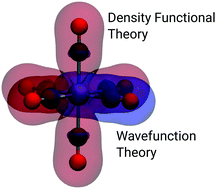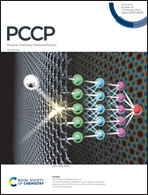Density functional theory based embedding approaches for transition-metal complexes†
Abstract
Transition metal species are commonly discussed by considering the metal atom embedded in a ligand environment. This apparently makes them interesting targets for modern embedding strategies based on Kohn–Sham density functional theory (DFT), which aim at modelling accurate predictions for large systems by combining different quantum chemical methods. In this perspective, we will focus on subsystem density functional theory and projection-based embedding. We review the developments in the field for transition metal species, demonstrate benefits, drawbacks and analyse error sources of the different strategies using the example of chromium hexacarbonyle, before giving a perspective where the field is currently heading.

- This article is part of the themed collection: PCCP Perspectives


 Please wait while we load your content...
Please wait while we load your content...